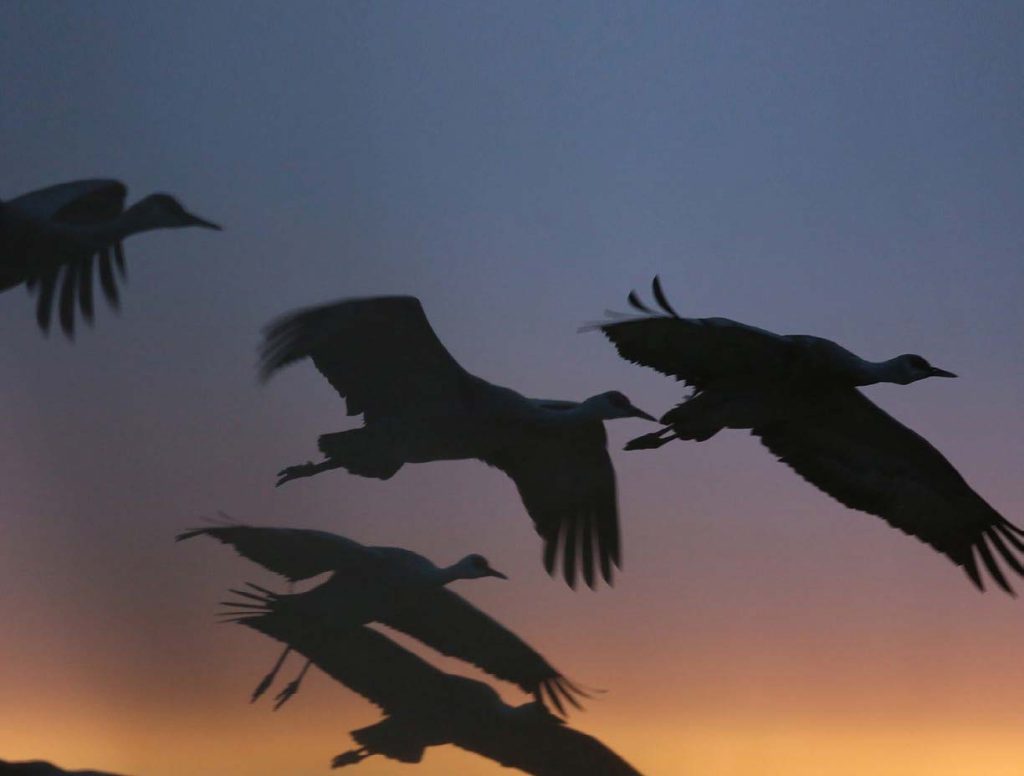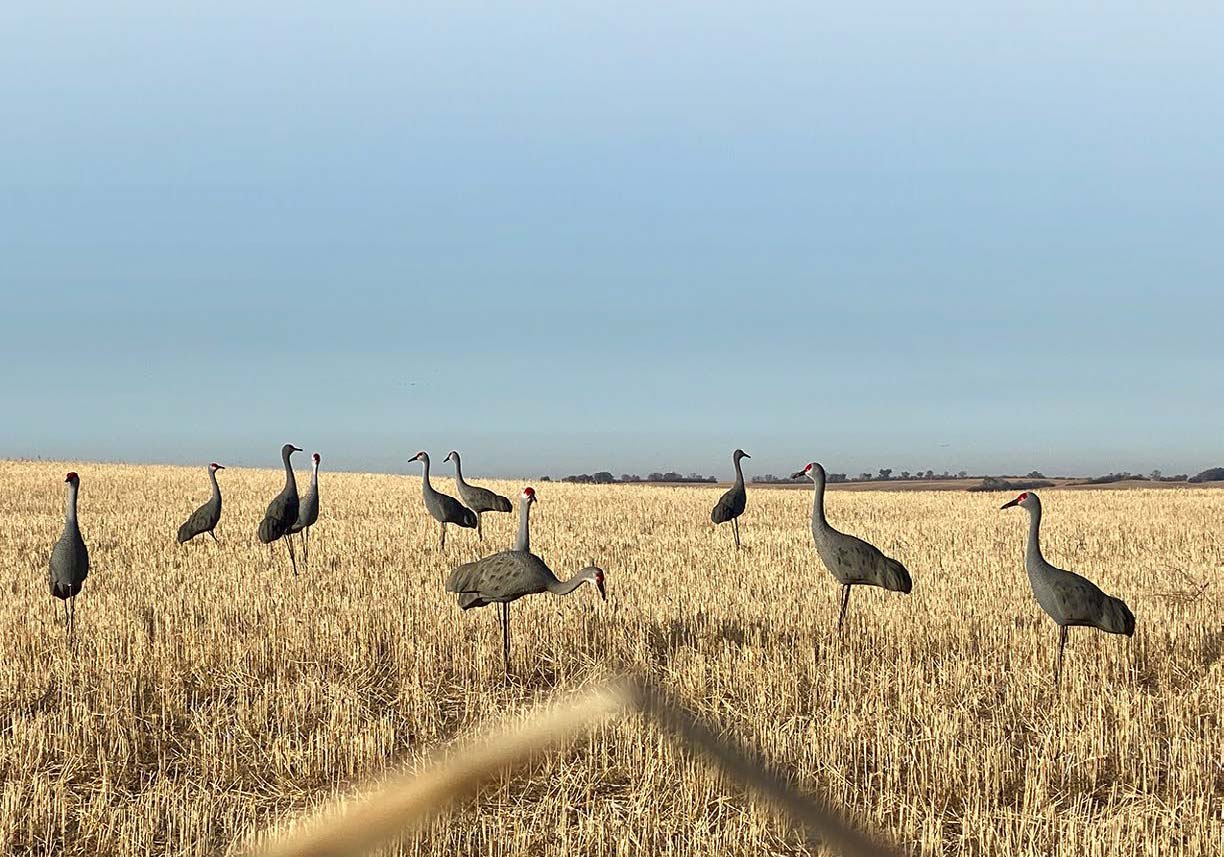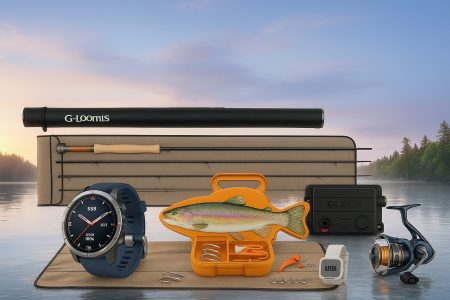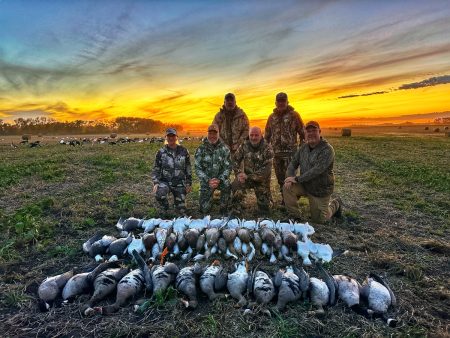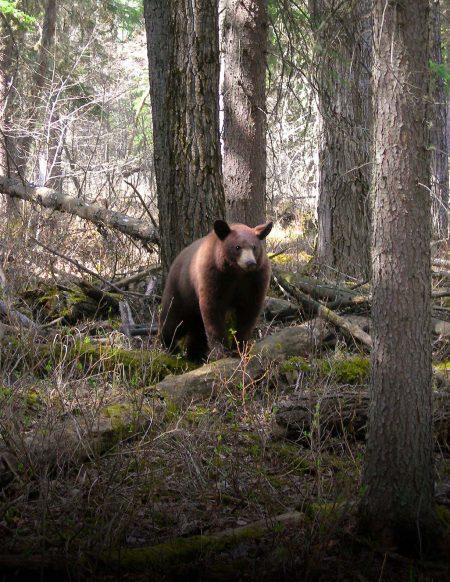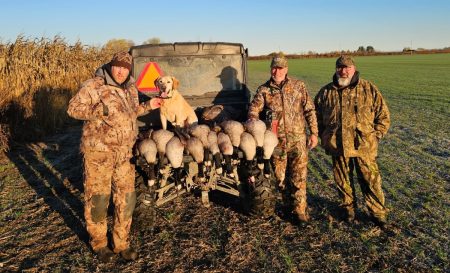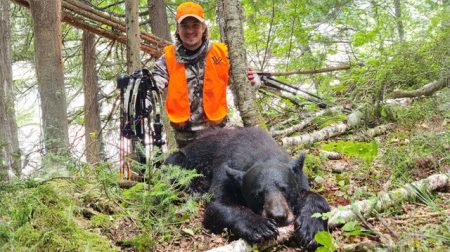It was warm for mid-October, and the still morning air was perfect for our sandhill crane hunt in southern Saskatchewan. A clear sky and a touch of frost made for a spectacular sunrise on the prairie. The eastern horizon lit up with warm, pastel colors that were exaggerated on the scattered clouds.
Calm, quiet days are magical for cranes, birds that often fly six feet off the ground. The wind has the opposite effect, forcing these prehistoric birds to fly high. To add to the excitement, we could hear the croaking sound of birds on the roost from miles away. They were anxious to get out for a daily feed.
Day One
The cranes anticipated breakfast and talked on the roost as they prepared for flight. Minutes after legal shooting light, the cranes started to fly. The calm air carried the sounds of hundreds of birds vocalizing their excitement as they headed to the fields. The dark objects in the sky grew bigger until they became discernible as cranes. Their massive wings push the birds incredibly fast, and that can be deceptive to hunters. Sandhills can have a wingspan of over six feet, and even though they look like they are in slow motion, they are cruising.
A flock of a dozen birds worked to our west. Our guides, Bill Dougan and Mark Desroches, with Prairie Goose Outfitters, pulled up a 10-foot flagging pole with two dark flyers, waved it high, and slowly worked it to the ground. The technique immediately grabbed the attention of the cranes, and they turned and flew toward us. Everyone clamored with excitement as the birds quickly closed the distance. As they neared our decoys, the lead birds dropped their feet and searched for a landing spot below. When the shot was called, long necks and legs twisted through the air as cranes tumbled to the ground.
A quick pick-up and we were back into the action. Flocks of cranes lined the sky to the horizon, and our flagging and calling drew the next flock that quickly committed to a landing. Our crew shot well, leading from the tip of the beak and trying to ignore the overall length of the cranes and their ridiculous wingspans.
The crew was shooting straight, but we also upped the ante by using Fiocchi Golden Waterfowl Bismuth. The premium shot is fast, hits much harder than steel and allows smaller pellet sizes to increase pattern density and downrange kinetic energy. At the shot, the cranes folded fast and hard, which is what any waterfowl hunter dreams about for a lethal shot.
Our morning ended faster than anyone wanted. When the sun broke the horizon, we had a five-person limit of cranes on the ground. It was an exciting morning and our first hunt over Final Approach’s new, fully flocked, full-body sandhill crane decoys. The decoys are incredibly effective and look like real birds when on stands in the field. The decoys created confidence for incoming birds to land because the decoys looked real.
The rest of the day was spent relaxing, cutting grass, bundling it for the blinds and enjoying some teriyaki crane for dinner. Mark and Bill had a field locked down for the morning. We couldn’t wait to see if we could repeat our success from Day One.
They’re Prehistoric
Sandhill cranes have been around for 2.5 million years. They have several nicknames. The name, “ribeye of the sky” is the most enduring. It describes the succulent, dense bird proteins that are better than beef steaks. The birds are also called “pterodactyls” as a tribute to their life history, which stretches back to the dinosaur or Mesozoic Era. People call sandhills “wild turkeys” in some regions due to the birds’ croaking and unique calls. With long necks, sharp beaks and acrobatics when shot out of the air, the long bird can also be called a “lawn dart.”
Sandhill cranes are considered a trophy by most waterfowl enthusiasts. There are limited seasons that align with the bird’s flyway. Some jurisdictions have limited entry draws with lucky where applicants can shoot one bird. Five birds in the daily bag, with 15 in possession, can be harvested in other parts of the flyway.
Day Two
The following day brought a slight breeze and less color in the sky, but the birds were there and croaking their morning melody in search of breakfast. We positioned our blind perpendicular to the wind and left open lanes between decoys for birds to fly into the spread. The decoys were scattered in units upwind of the blind to draw the birds past us for the best shooting opportunities.
The first flock had 10 birds. They approached low as if appearing out of a hilltop. The birds were silent until they got close, then their excited croaks sent adrenaline surging through our veins. The birds were tight when we stood to shoot, and cranes fell from the sky from our well-placed patterns of bismuth.
Minutes later, a pair soared towards our blind, fading back and forth in flight as they lost elevation. Notice was given to two shooters to stand ready, and guns started blazing when the birds were 20 yards out. The action was fast and furious, and before we knew it, the hunt was over. Birds were lined up and admired for unique colors, with adults having burgundy red foreheads. The long legs, toes and nails are weapons to be wary of, providing another reason for using a lethal shot. Wounded cranes have attacked hunters and dogs, so caution is required.

Day Three
The third morning brought wind and challenging conditions. Some early birds decoyed well, but the cranes started flying high once the wind picked up. We did manage to call and flag several groups to add to our bag. We watched thousands of cranes head to the north, where they fed in harvested grain fields for most of the morning. We opted to wait the birds out and try to decoy some flocks when they returned to their day roost midday.
Our morning hunt lasted five hours when a small flock of cranes tried to finish beside the decoys. We had worked hard, shot well and used the best decoys, blinds, calls, flags and shotshells to ensure success. The challenging shooting conditions made it more apparent that bismuth was the best option to kill birds clean in the solid wind. The calm days seemed relatively easy to shoot, but the bismuth carried its weight with few cripples and fast limits. Bismuth does cost more than steel alternatives. However, considering the overall cost of the hunt, the limit of five birds a day, and the limited opportunity for this type of hunt across most of North America, it was the obvious choice for success. It is fast, hard-hitting, and kills clean.
A highlight of the hunt was the fantastic meals of sandhill crane every evening. The birds are unique and very similar to beef tenderloin. They are often called the “ribeye of the sky” for a good reason.
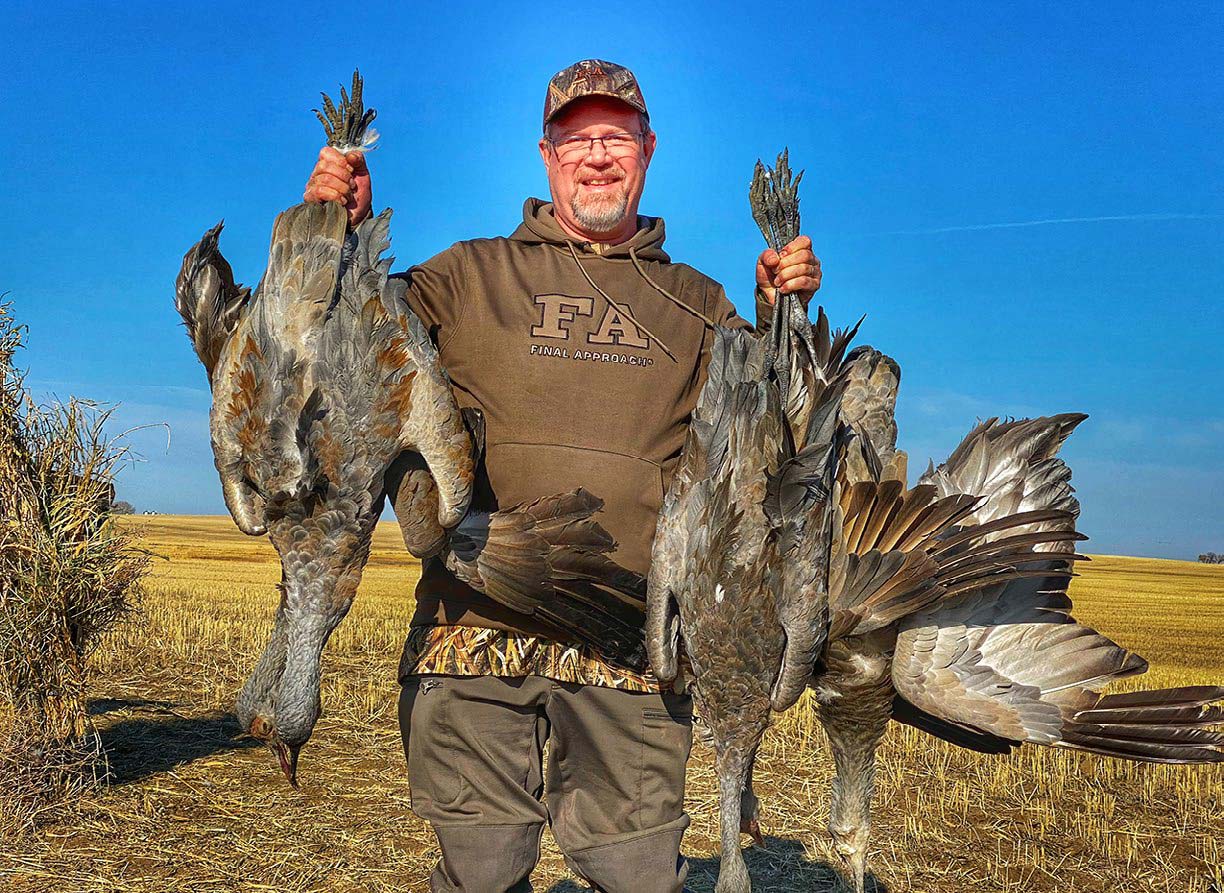
Management and Populations
Sandhill crane populations are currently above North American management objectives. The birds can live close to 30 years of age and have a unique life history. The lesser sandhills in western Canada are the most abundant, with over 300,000 birds in the fall migration. The bird’s life history tells us they have a low reproductive rate, making them susceptible to hunting pressure. That is why most hunting seasons and limits are conservative. Birds do not obtain full plumage until 2 ⅟2 years; they mature at 4 to 5 years. They nest in bogs or on the edge of wetlands and only lay two eggs in a clutch.
Fiocchi Golden Waterfowl Bismuth
Fiocchi is now producing premium, non-toxic bismuth shotshells. Fiocchi uses high-density 9.75g/cc bismuth in a precision-loaded, moisture-resistant, sealed hull that will provide superior performance shot after shot.
Golden Waterfowl Bismuth provides killing velocity paired with more significant energy transfer, denser patterns and extended ranges. Bismuth is available in 12- and 20-gauge, 3-inch loads. The 12-gauge bismuth loads with # 2, #4, and #6 shot are 1⅜ ounce loads, traveling at 1,459 feet per second. The 20-gauge options with #4 shot are 11/16, traveling at 1,250, or 15/16 ounces at 1.350.
Use bismuth to stack the odds in your favor when every shot counts. A new 28-gauge load will be available later this year. For more information, go to fiocchiusa.com.
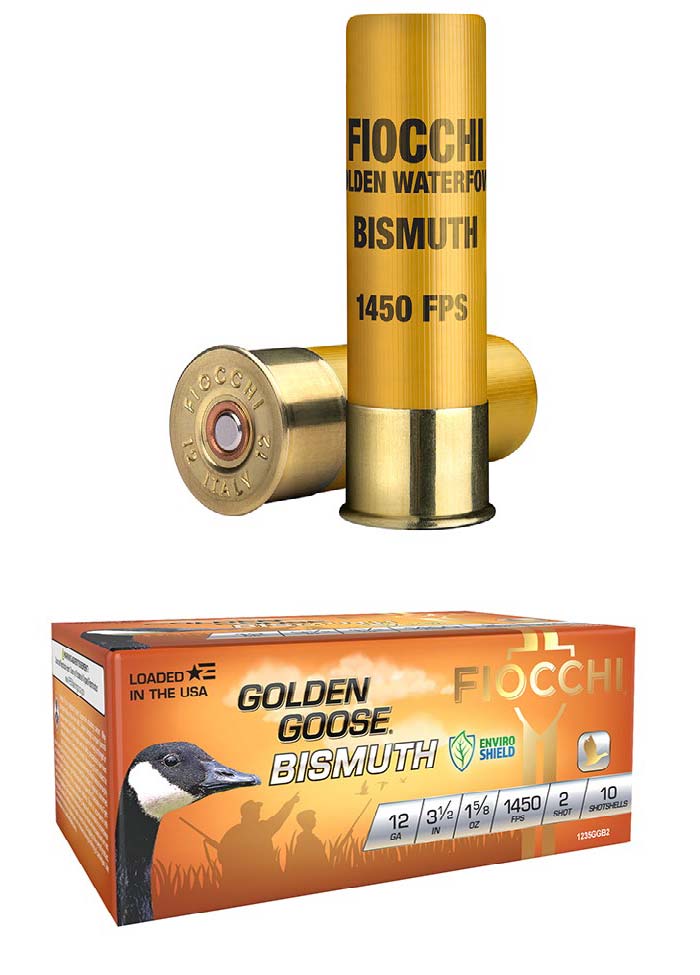
ALPS OutdoorZ Floating Deluxe Blind Bag
Calls, lunch, gloves and accessories are all in a well-thought-out blind bag. Staying organized and having shotshell options in the blind leads to higher success. Having different choke tubes on hand means you can change with the conditions to stay on target.
The Floating Deluxe Blind Bag is waterproof with a reinforced bottom. There are front and side pockets, a Thermos/jacket sleeve on top, a Thermos pocket on the side, and a carry handle and padded shoulder strap. Keys, wallet and licenses are secure with the added clear zippered valuables pocket on the interior of the lid. Removable interior dividers provide custom organization, and a hard sunglasses case prepares you for sunrise. See it at: alpsoutdoorz.com

Know Your Quarry
Sandhill cranes are among the world’s highest-flying birds and can be spotted high in the sky during migration. Their unmistakable trumpeting “garoo-oo-a-a-a” call can be heard over a mile away.
Adult cranes are primarily grey, with a red or burnt orange forehead and cap, white cheek patches and a long dark pointy bill. Tail feathers come together and hang down at the back, giving the appearance of a “bustle.” Their long dark legs and clawed toes follow straight behind them during flight and extend their head and neck straight out in front of them.
With an incredible six to eight-foot wingspan, sandhill cranes use warm air thermals to keep them aloft, which is especially helpful in conserving energy during long migrations. Adults can reach up to five feet when standing and weigh about 7.5 to 13 pounds.
Juvenile birds are rustier- or cinnamon-colored all over and will not earn their red forehead patch until they are two years old. The sexes look alike. Arctic populations of sandhill cranes include the subspecies known as lesser sandhill cranes (Grus canadensis), which are smaller than their cousins to the south.
Sandhill cranes are social creatures. They flock by the tens of thousands on their wintering grounds and during migration. Summers are also spent together in the northern parts of the Canadian provinces and Nunavut, NWT, Yukon, and Alaska. They breed and forage in open fields and tundra areas near marshy wetlands, preferring freshwater sources over the salty sea.
The wetland environments provide much of the forage the cranes need. As opportunistic omnivores, these wading birds feed on about anything, ranging from berries and aquatic plants to snakes, amphibians, small rodents, insects and worms. Their serrated bills act like garden tools as they root around and pick at their meal.
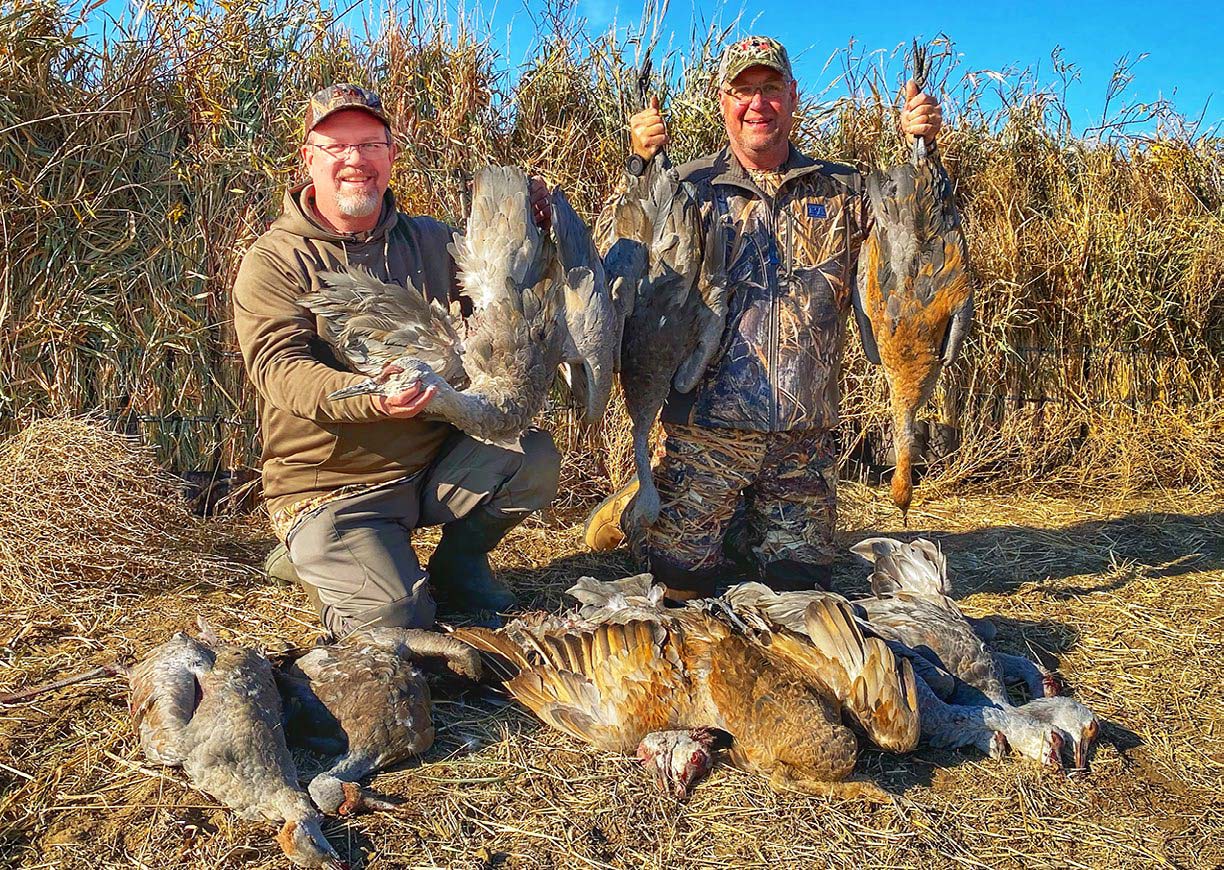
Mates for Life
Sandhill cranes have low reproductive rates and don’t begin breeding until seven years of age, but they mate for life and can live in the wild for up to 25 years. They arrive at their breeding grounds in the north by May and look for a place to nest around wetlands. Mating rituals are elaborate, with loud calling, head bobbing and intricate dances. Nests are made on the ground in a marsh or bog, using surrounding vegetation piled into a mound. Females lay one to two olive-brown eggs, and both sexes incubate for up to 32 days. After the eggs hatch, the young, called “colts,” won’t be able to fly for another three or four months when they then accompany their parents on their first migration. The brood is vulnerable to predation from foxes, coyotes, wolves and even ravens and gulls.
Large numbers of cranes concentrate on their wintering grounds in the southern U.S., where they are vulnerable to habitat loss. On their breeding grounds in the north, populations appear to be relatively stable, and threats are low.
Per our affiliate disclosure, we may earn revenue from the products available on this page. To learn more about how we test gear, click here.






